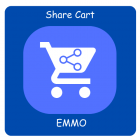Why Go Headless on Shopify? Benefits and Key Considerations

Why Go Headless on Shopify? Benefits and Key Considerations
Going headless with Shopify is an increasingly popular choice for brands that want greater control over their eCommerce experience. This approach decouples the frontend (user interface) from Shopify’s backend, enabling a customized, faster, and more scalable site. Key benefits include:
Table Of Content
- Understanding Headless E-commerce on Shopify: What It Is and Why It Matters
- Is Shopify a Headless CMS?
- Why Choose Headless for Your Shopify Store?
- Limitations and Considerations of Using Headless Shopify for eCommerce
- Is there different ways to build a headless ecommerce store?
- Shopify Headless Commerce Explained: How It Works and Why It's Valuable
- Understanding the Costs of Headless E-commerce with Shopify Hydrogen
- Why Choose a Headless Shopify Ecommerce Solution?
Understanding Headless E-commerce on Shopify: What It Is and Why It Matters
Headless e-commerce on Shopify separates your store's front end from its back end, offering greater flexibility and customization for design and functionality. By implementing a headless setup, we use Shopify to handle the back-end operations and build the front end with a JavaScript framework like React. This approach allows stores to bypass traditional limitations, creating a unique and fast shopping experience tailored to each brand’s needs.
Headless e-commerce delivers several advantages. For example:
- Performance: Improved site speed since only necessary data is loaded.
- Customization: Unlimited design options enable highly personalized storefronts.
- Scalability: The ability to adapt and add features as the business grows.
This structure allows merchants to create complex and interactive front-end designs that communicate with the back end only when needed, optimizing speed and usability.
| Feature | Benefits |
|---|---|
| Enhanced Speed | Faster load times and response |
| Customizable Design | Unique, brand-specific shopping experience |
| Future-Ready | Easily scalable for growth |
By moving to a headless setup, brands can achieve a user experience that feels modern, dynamic, and free from traditional platform limitations. This approach is ideal if you need advanced customization, and it can significantly improve the customer journey across devices. Interested in partnering with a headless Shopify agency? Let’s discuss your specific needs and goals.
Is Shopify a Headless CMS?
Shopify isn’t a traditional headless CMS, but it can act as part of a headless solution, especially for e-commerce functions. Headless commerce with Shopify allows you to separate the front-end experience (what users see and interact with) from the back-end e-commerce functions that Shopify excels at, like inventory management, order processing, and customer data handling. This setup is beneficial if you want full control over your site’s look and functionality while still utilizing Shopify's robust e-commerce tools.
With a headless approach, Shopify provides a back-end API (Storefront API) to integrate data like products and orders into a custom front-end. However, it doesn’t offer native support for extensive front-end customization in terms of layouts and dynamic content management that a CMS like Contentful or Shogun Frontend can offer. If you need a custom, flexible front-end, a third-party headless CMS could manage site pages, content updates, and visual consistency, freeing your marketing team from relying on developers for every change.
Advantages of Using Headless Shopify
| Feature | Shopify (Traditional) | Headless Shopify |
|---|---|---|
| Product Management | Yes | Yes |
| Order Management | Yes | Yes |
| Customizable Front-end | Limited | Yes (with custom CMS) |
| SEO and Marketing Control | Basic | Advanced via custom CMS |
| Content Update Control | Through developers | Full (via CMS) |
Why Choose Headless for Your Shopify Store?
Going headless with Shopify brings several clear advantages, especially for speed and flexibility, allowing brands to deliver highly customized and performance-optimized experiences.
Enhanced Speed and Performance
A headless Shopify store, built with frameworks like React, can significantly improve page load speeds and overall site performance. With headless, your store is free from the traditional Shopify front-end constraints, allowing full control over what content loads and when. This often leads to faster loading times, positively impacting user experience and potentially increasing conversion rates. Research suggests a 2% drop in conversions for every extra second a page takes to load, making speed a critical factor.
Key Benefits of Headless Shopify
| Feature | Headless Benefit |
|---|---|
| Site Speed | Faster loading, improved Google Lighthouse scores |
| Conversion Rates | Higher rates with reduced load times |
| Customization | Tailor features and experience without limits |
| Developer Flexibility | Full control over code and integrations |
Advanced Customization and Flexibility
Headless setups allow for complex, unique functionalities that might not be possible with Shopify’s traditional structure. This is particularly useful for businesses with specific needs or custom product offerings. By managing your store’s front-end independently, you can control how different features connect and perform, enabling personalized user experiences. Unlike Shopify’s standard setup, a headless approach is fully customizable, allowing integration with various third-party platforms whenever necessary.
Cost Implications and ROI
While the upfront development for a headless Shopify site can be higher, many businesses see increased ROI. Improved site speed, enhanced user experiences, and higher conversions reduce dependency on third-party apps and contribute to long-term savings. Past feedback indicates that investing in a tailored experience through headless architecture often yields faster load times, higher customer engagement, and increased conversions—outcomes that justify initial expenses.
Limitations and Considerations of Using Headless Shopify for eCommerce
Switching to a headless architecture on Shopify is an impactful decision, but it comes with several critical limitations that may not suit all merchants. Before choosing this setup, understanding the potential downsides is essential.
Key Challenges and Costs
One of the most significant limitations of headless Shopify is the cost. Headless development often requires specialized expertise, such as developers skilled in frameworks like React, which tend to come with higher fees. These development costs make headless implementations more expensive than traditional Shopify themes, and the ongoing maintenance can add to this financial burden.
Integration Complexities
Shopify’s ecosystem offers built-in integrations with various third-party tools—such as customer reviews, Instagram feeds, and logistics providers. However, going headless removes easy access to these built-in connections, meaning custom development may be needed to integrate even basic functions. While platforms are beginning to offer more support for headless setups (such as Shopify Hydrogen), these solutions are still evolving, adding complexity to integrations for essential tools.
Increased Dependency on Development Resources
With a headless Shopify setup, merchants often rely on developers for content updates and adjustments. Although tools like Shogun Frontend can help manage some aspects of the site, most customization requires technical support, particularly when compared to Shopify’s standard theme options that empower non-technical users to make changes independently. This dependency can slow down workflows and increase long-term maintenance costs.
SEO Limitations
Switching to headless can also impact SEO. Unlike Shopify’s native URL structure, which is automatically optimized, a headless setup can lead to flat URL structures that affect SEO, making it challenging to build domain authority through keyword optimization. Moreover, Shopify’s restrictions on URL hierarchies can make subdirectories appear flat, which may disrupt organic search performance.
Considerations for Multichannel and Localization
For merchants with global audiences, managing multiple regions or languages can become a hurdle. Headless setups often require complex configuration for localization, with separate codebases for each region. This can introduce consistency issues and increased workload, especially as the need for distinct apps and extensions per market adds to operational challenges. Some CMS options within headless setups streamline localization, but the initial setup remains intensive.
Summary Table of Limitations
| Limitation | Impact |
|---|---|
| High Development Cost | Specialized skills increase costs |
| Complex Integrations | Custom setups needed for basic third-party tools |
| SEO Challenges | Flat URL structure may reduce domain authority |
| Dependency on Developers | Requires ongoing development for content management |
| Localization Complexity | Separate codebases and apps needed for global markets |
These limitations highlight that while headless Shopify offers flexibility and performance benefits, it requires a significant commitment in terms of cost, development resources, and customization. For many merchants, these challenges can outweigh the advantages, especially if they need a simpler, more integrated solution.
Tip
To enhance your eCommerce store’s performance with Magento, focus on optimizing site speed by utilizing Emmo themes and extensions. These tools are designed for efficiency, ensuring your website loads quickly and provides a smooth user experience. Start leveraging Emmo's powerful solutions today to boost customer satisfaction and drive sales!
Is there different ways to build a headless ecommerce store?
Tracking various types of PPC conversions is crucial after setting up your campaigns. It gives you insights that help optimize for better performance. By understanding the conversion actions users take on your site, you can analyze your ads' effectiveness and make informed decisions. This data highlights what resonates with your audience and allows you to adjust your strategies for improved outcomes.
There are several options when thinking about going headless (in terms of the way you approach it with platforms and tools). But, often, the biggest choice brands face is: Should you construct your frontend entirely custom from scratch, or do you go the route of frontend-as-a-service which offers the core skeleton to how the frontend should be structured. In option one, the completely composable, bespoke route, retailers team up with developers or an agency to handpick all the backend functions, microservices, third-party add-ons, and middleware components of the build — stitching everything together. We feel platforms like Shogun can improve the efficiency of development resource and control over the store post build. On the other hand, option two is the frontend-as-a-service approach. Implementing a headless PWA build with a platform like Shogun Frontend, for example, wherein you get all the benefits of enterprise headless commerce, without the unwieldy ecommerce stack management issues. With a frontend-as-a-service platform, everything to achieve a decoupled frontend is entirely end-to-end — helping merchandising teams realize the benefits of headless in a low-code environment.
Shopify Headless Commerce Explained: How It Works and Why It's Valuable
Headless commerce on Shopify separates the back-end (Shopify’s management and data-handling system) from the front-end (the user-facing part of a website). This setup allows developers to build and host custom storefronts independently, often with flexible frameworks like React or Gatsby. Shopify’s headless configuration offers more freedom in design, user experience, and site speed, benefiting brands focused on personalized and efficient digital interactions.
Shopify has developed its own tools to simplify this approach: Hydrogen, a React-based framework, connects seamlessly with Shopify’s API to streamline back-end tasks like checkout and customer data management. Hydrogen is deployed on Shopify's free Oxygen hosting, designed to maintain high performance and support rapid scaling, ideal for dynamic, high-traffic websites. Through Hydrogen, tasks like content updates, cart management, and integrating third-party apps become easier, leveraging Shopify’s secure infrastructure while maintaining control over the site's aesthetics.
Key Benefits and Drawbacks
| Benefits | Drawbacks |
|---|---|
| Faster page speeds | High development and maintenance costs |
| Full control over user experience | Requires ongoing support from skilled developers |
| Ability to customize checkout and URLs | Compatibility issues with certain third-party apps |
| Enhanced SEO options | Some functionality loss compared to traditional stores |
| Supports multi-device and omnichannel sales | Complex integration requirements |
While headless commerce empowers brands to craft unique digital experiences, it's a significant investment, often fitting larger brands with the resources to manage complex builds. Many mid-market and enterprise brands, like Peloton and Allbirds, have adopted this setup for enhanced branding and streamlined operations. However, for brands thriving on traditional Shopify architecture, headless might not offer enough ROI to justify the cost. Considering the pros and cons, it’s essential to assess your business goals and technical capabilities. If your brand values customized user interactions and operates across multiple digital channels, headless may offer a strategic advantage. For those seeking a unique, scalable approach, Shopify headless could be transformative, especially if you’re ready to work with an experienced Shopify development team to manage the complexities of a headless setup.
Understanding the Costs of Headless E-commerce with Shopify Hydrogen
Transitioning to headless commerce on Shopify can bring flexibility and customization to your online store. Using Shopify's Hydrogen framework, which is free and open-source, developers can build unique storefronts tailored to brand needs. Hydrogen integrates seamlessly with Oxygen, Shopify’s global hosting infrastructure, which also comes at no additional cost for deployment. However, costs can vary significantly based on the setup and additional features required.
Breakdown of Costs
Here’s a more detailed look at potential expenses for headless Shopify development:
- Development Costs: Initial build costs for a headless Shopify site vary widely depending on customization needs and design. A basic headless site could start at around $30,000 but could exceed $150,000 for highly complex or feature-rich setups.
- Hourly Rates: If you hire developers on an hourly basis, rates depend on location and expertise. For instance, developers in the U.S. charge between $100 and $200 per hour, while rates in other regions, like India, can be much lower, typically $25 to $60 per hour.
- Ongoing Maintenance: Beyond the initial setup, expect monthly fees to keep your headless Shopify site running smoothly. This may include routine updates, security patches, and integration with new tools and plugins.
Additional Costs and Considerations
Using headless architecture may also require investments in third-party APIs or tools to optimize performance and user experience. Examples include analytics, search functionalities, or custom content management systems. Regular updates and added functionalities may incur additional costs.
Why Choose a Headless Shopify Ecommerce Solution?
Headless ecommerce with Shopify offers brands extensive design flexibility and top-tier performance. Unlike traditional setups, headless architecture separates the frontend (customer experience) from the backend (Shopify’s data and management). This setup allows for custom coding on the frontend, enabling unique designs and user interactions beyond Shopify’s theme constraints, while the backend reliably handles inventory, customer orders, and other core functions.
- 1. Performance Benefits Headless Shopify sites often have faster load times and better responsiveness because developers control exactly what content loads and when. This can lead to higher conversion rates and improved SEO rankings, essential factors for ecommerce growth. Faster load speeds also enhance user experience, which positively impacts search engine rankings and customer retention.
- 2. Customization and Unique Experiences With headless, brands can create truly unique experiences tailored to specific customer needs or engagement strategies. This customization can include advanced checkout options, multi-channel integration (such as video or app-based sales), and dynamic storefronts that would be challenging with standard themes. Shopify’s Hydrogen framework, for example, provides a foundation for fast, React-based storefronts, enabling brands to deliver engaging and unique interfaces.
- 3. Scalability and Future-Proofing A headless setup enables brands to add new features or integrations without being limited by Shopify’s built-in theme editor. This flexibility allows businesses to evolve their site’s functionality over time, staying relevant as customer needs change. For instance, while Shopify themes may have limitations in design or third-party integrations, headless architecture can seamlessly integrate with various tools and custom solutions, accommodating specific brand requirements.
FAQs
What Does It Mean to Go Headless on Shopify?
Going headless on Shopify means separating the front-end of your store (what customers see) from the back-end (where data and e-commerce processes happen). This setup allows for more customization, flexibility, and speed compared to traditional Shopify setups.
What Are the Benefits of a Headless Shopify Store?
Headless architecture offers enhanced performance, improved site speed, and full design control. It enables seamless integration with other platforms and tools, allowing you to deliver a unique and engaging customer experience.
Is Headless Shopify Suitable for All Types of Businesses?
Headless Shopify is often best for larger, more complex businesses that require high customization or aim to provide unique customer experiences. Smaller stores with simpler needs might find traditional Shopify setups more practical and cost-effective.
How Does Going Headless Affect SEO on Shopify?
With a headless setup, you can optimize site speed and improve user experience, both of which positively impact SEO. However, implementing SEO best practices requires careful setup to ensure all content is accessible to search engines.
What Are the Key Considerations Before Going Headless on Shopify?
Consider the technical requirements, ongoing maintenance, and costs associated with headless architecture. Ensure you have a team or resources available to manage the increased complexity in both development and content management.
What Tools Can I Use to Build a Headless Shopify Store?
Popular tools for headless Shopify setups include frontend frameworks like React or Vue.js and content management systems (CMS) like Contentful or Sanity. Additionally, Shopify’s Storefront API allows smooth integration of these tools.
Where Can I Learn More About Headless Shopify Architecture?
For more information, explore Shopify’s Storefront API documentation or resources from e-commerce development blogs. These sources provide in-depth guides to help you understand and implement a headless setup.









